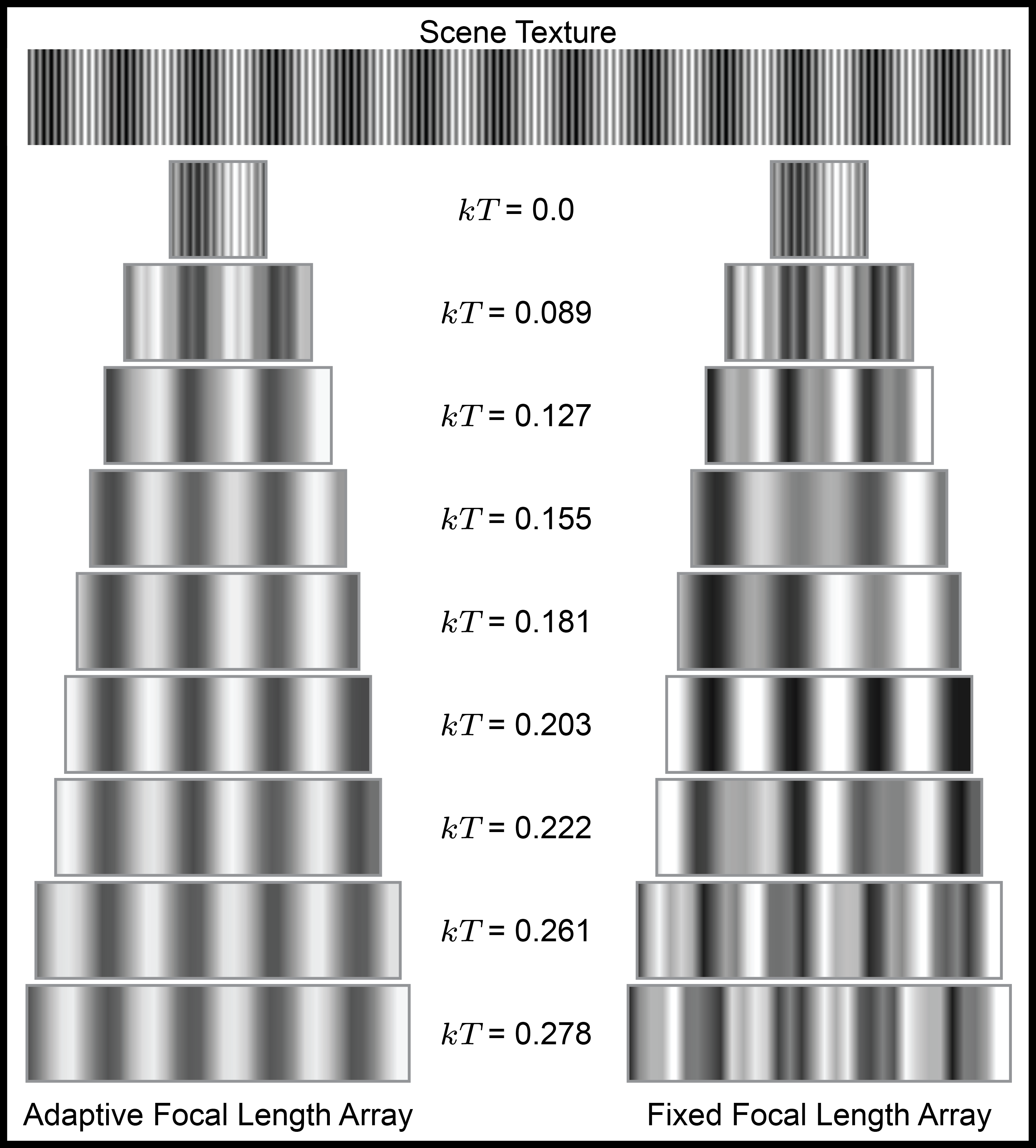Aliasing in the Fixed and Adaptive Focal Length Cases |
 In this figure we compare rendered images captured using fixed focal length and adaptive focal length lens array. The scene texture is the sum of two sinusoids, one low and one high in frequency. Using the known optical properties (PSFs and sampling period) of the two arrays, we rendered images captured by the two systems. For each curvature of the arrays, we assumed that the scene surface is also curved with the same center of curvature as the arrays. Since the FOV of the sheet camera increases with curvature, we interpolated the captured images in the horizontal direction to obtain stretched images that depict the increasing horizontal FOV of the array. For the adaptive system, due to blurring, the high frequency sinusoid decreases in magnitude with curvature, while the low frequency sinusoid is faithfully reproduced over the entire range of deformations. In contrast, due to the narrow and fixed FOV of the lenses in the non-adaptive case, the scene texture is under-sampled for the higher curvatures, which results in undesirable aliasing artifacts. |